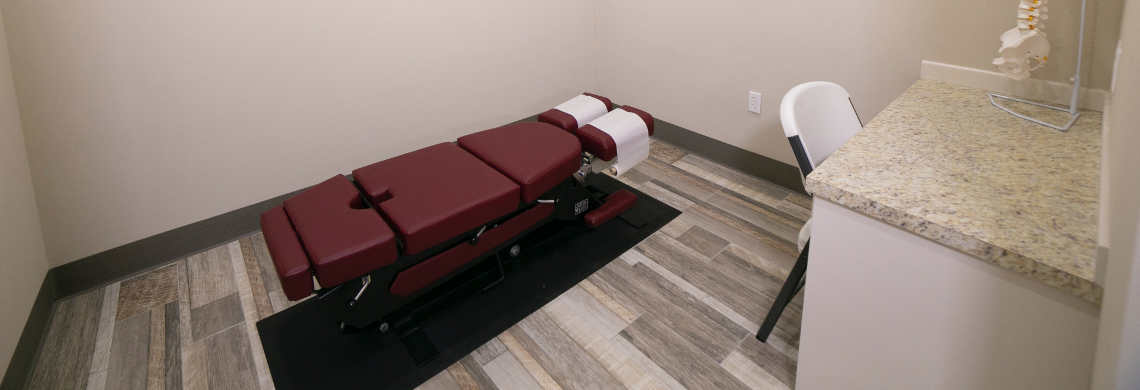Visit to a urogynecological physiotherapist - interview with a specialist

What does the visit look like? How to prepare for it? How is the test performed? So, everything you want to know about an appointment with a urogynecological physiotherapist. Our specialist Anna Sołtyk will answer your questions.
When is it worth making an appointment if I have never used the advice of a specialist in this field? Do I have to worry about something or is it worth going at a certain point in my life?
- Women usually make an appointment with a urogynecological physiotherapist for the first time, when they begin to feel ailments from the pelvic floor. Unfortunately, very often the first visit takes place only when the problem is so serious that it begins to hinder normal functioning. Therefore, when something bothers you, do not delay and go to an appointment as soon as possible.
There are times in a woman's life when it is worth making an appointment with a pelvic floor therapist, even if we are okay. Every woman should have such an appointment after childbirth, because pregnancy and childbirth have a huge impact on the pelvic floor muscles, which often have impaired functions and for everything to return to normal, therapy and exercise are needed. It is also worth thinking about pelvic floor muscle training when planning a pregnancy. This will allow you to prepare your body for pregnancy and childbirth in the best possible way. Women after urogynecological and menopausal surgeries can also come for an appointment, because in both cases our pelvis may need support.
I believe that every woman who cares about her body and health should have a preventive examination. Pelvic floor training brings many benefits, teaches us to work consciously with the body and helps to avoid unpleasant ailments in the future. Fortunately, the level of knowledge about the pelvic floor and awareness among women is constantly growing, which is why I see such preventive visits in my office more and more often.
Which pelvic floor problems do patients most often report?
- The most common problems reported by patients are: urinary incontinence, lower pelvic organs, painful intercourse or lack of sexual satisfaction, pelvic pain of various origins, endometriosis, postoperative and postpartum scars, painful menstruation, condition after pelvic floor surgery and postpartum check-ups.
Do I have to prepare for the first visit? What test results or what documents will you need?
- You don't have to prepare yourself for the first visit. However, it is worth remembering that the date of the meeting should not overlap with the date of the menstruation. It is good to take tests from a gynecologist or urologist (if we have any) with you for the visit. For a physiotherapist, this is important information about our health.
What will happen during the first visit?
- I start my visit with a detailed medical interview. I am talking with the patient about the health condition and the problem she has with. The symptoms reported by the patient are very important. Then, using the pelvic model, I explain exactly how the pelvic floor works, how the individual muscles work and what their function is. I would like to inform you about the pelvic floor muscle examination and what the goal of our therapy will be. After the examination and assessment of the pelvic floor, I set up individual training for the patient. The patient learns to properly perform pelvic floor muscle exercises and other required, if necessary, exercises that she will use at home, as well as discuss body posture and breathing, because it is very much related to the condition of our pelvis. During the first visit, I also check the condition of the abdominal muscles. I pay attention to the correct habits and recommend what should be avoided.
Will a physiotherapist perform a transvaginal examination?
- If the visit concerns a pelvic floor problem, a vaginal examination is performed.
What does the per vaginum test look like, when necessary, and what will it show us?
- The physiotherapist palpates transvaginal muscle tone, assesses the strength and function of the pelvic floor, and checks for organ depression. Then I ask the patient to perform a muscle movement to make sure that it will activate them properly during self-training. Otherwise, the patient could hurt herself and achieve the opposite of the intended effect.
It is worth being aware of the importance of this study. Every pelvic floor is different - different parts of the muscles may feel weak or tense. Thanks to the examination, the specialist selects the therapy and determines individual medical training in the direction of relaxation or strengthening.
At check-up, we can see the effects of the therapy if compared to the first study.
The examination is usually completely painless.
How often will we meet at a later date?
- The frequency of meetings depends on the individual needs of the person. In my practice, it usually looks like we meet once a week. On the other hand, between visits, the patient exercises independently at home every day. Sometimes it is enough to visit once every 2 weeks, and sometimes it happens that we meet twice a week, e.g. if we perform treatments using devices that are in the office.
In addition to manual therapy and medical exercises, do you also use other treatment methods?
- In my office I also use equipment that supports diagnostics and therapy of the pelvic floor. This includes electromyography, thanks to which a woman can see the work of her pelvic floor muscles on the screen, workouts with biofeedback and electrostimulation of the pelvic floor muscles.
What are the effects of urogynecological physiotherapy? Do you have to wait long for them?
- Urogynecological physiotherapy is a great alternative to surgery and pharmacological treatment. Its effects are usually very good, and you don't have to wait long for improvement. Of course, it all depends on the size of the problem and the patient's compliance with the recommendations of the physiotherapist. Often, during the second visit, I hear from patients that after a week they feel a difference in how they feel. This does not mean, however, that we will cure the disease in a very short time, but the awareness, education on how to proceed and regular exercise mean that the first changes can be noticed quickly. However, you need to take time to fully recover. There is no specific pattern - it is an individual matter. I often encounter a situation where urogynecological physiotherapy is appreciated by a gynecologist or urologist who orders the patient to see a physiotherapist in order to try to eliminate the problem with therapy. Often, surgery is avoided in this way.
That is why I strongly encourage all ladies suffering from pelvic floor dysfunction to go to a good specialist in their city. Don't wait and expect the problem to resolve itself. Starting therapy as soon as possible can minimize symptoms and significantly improve quality of life.
Interview with Anna Sołtyk, urogynecological physiotherapist













